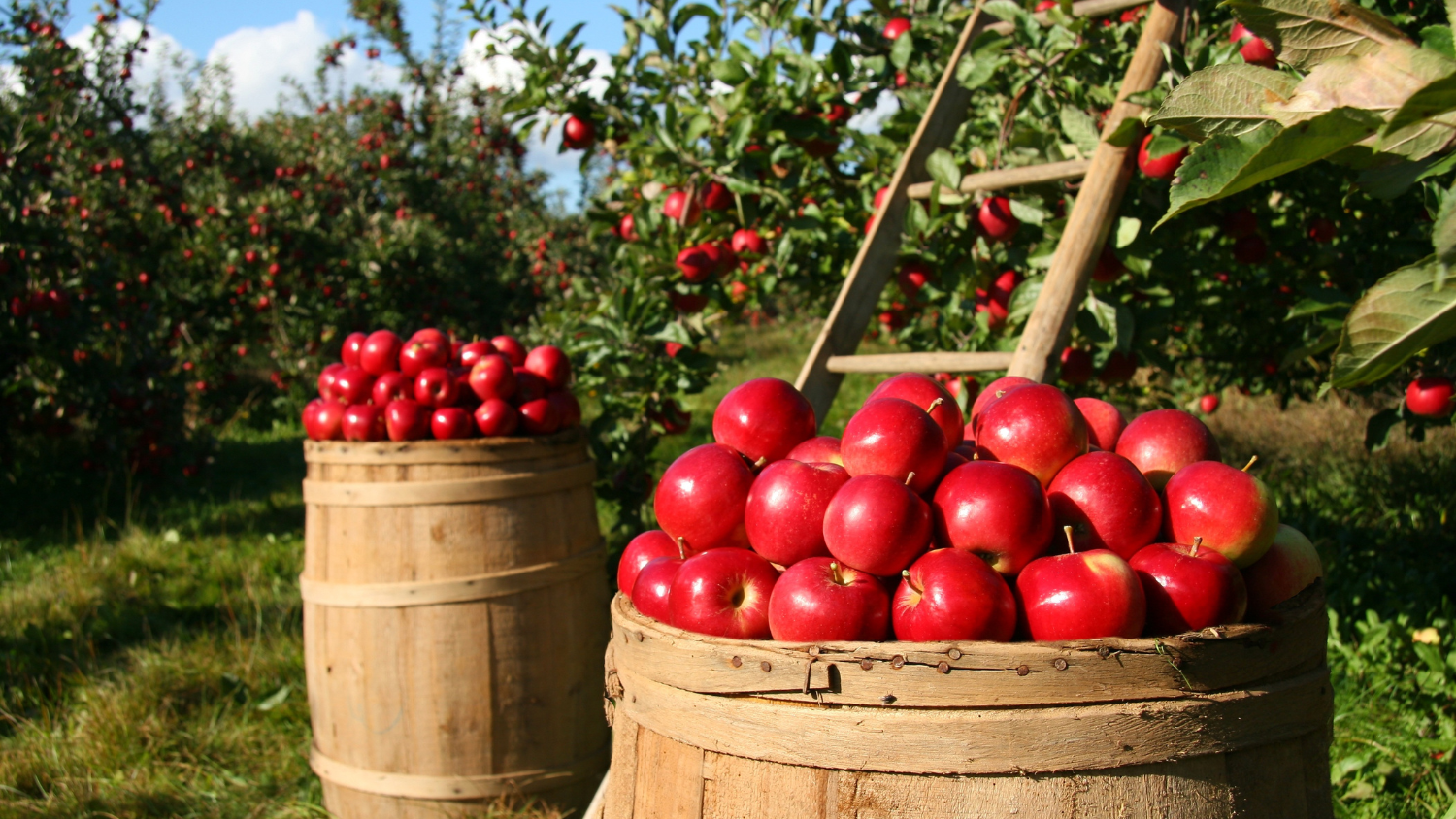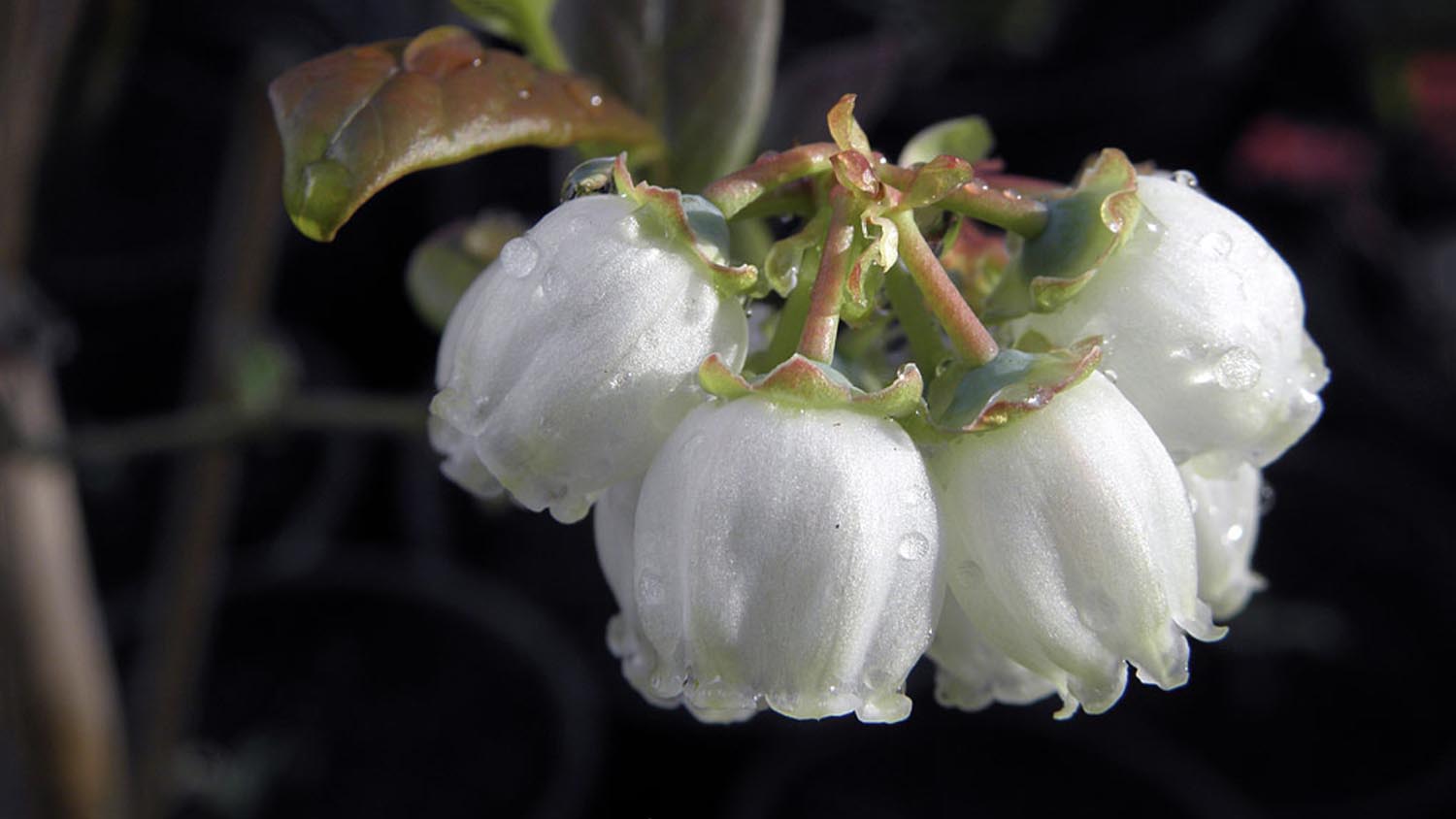With temperatures dropping and leaves changing colors, fall is in full swing in North Carolina. Though there are many fall activities to choose from, including picking pumpkins, apple picking remains a favorite seasonal tradition. And October also happens to be National Apple Month, so it’s the perfect time to get pickin’.
Mike Parker, a tree fruit specialist with NC State Extension and an associate professor in the Department of Horticultural Science, has worked professionally with apples for over 45 years. A Michigan native, he also grew up on a small fruit farm and later earned his master’s degree in postharvest physiology and a Ph.D. in orchard management production from Michigan State University.
Parker gives an inside look at North Carolina’s apple industry to prepare you and your family for a “unbelievapple” trip to apple orchards this fall.
A Variety of Different Varieties
When visiting an apple orchard, the number of apple varieties is a great opportunity. From green to red to even darker red, there are multiple options. When choosing what you’d like to pick, it’s important to know that apples are classified by flavor: sweet, semi-sweet and tart.
“It’s a balance between the sugars and acids that give each a unique flavor,” says Parker. “It’s a genetic trait of each variety.”
Tart apples have a higher acidity-to-sugar ratio, and sweet apples have a higher sugar-to-acidity ratio. Ranging from sweet to tart, each year, there are primarily six to eight varieties grown in North Carolina, and in some orchards, more than 40. Growing choices are made based on consumer preferences.
“North Carolina growers don’t want to grow what they can grow. They want to grow high-quality fruit that the consumer wants,” says Parker.
As consumer preferences shift, so do the varieties grown. This year, some of the primary varieties being grown are Cameos, Crimson Crisp, Gala, Fuji, Golden Delicious, Rome, Pink Lady and Granny Smith. Gala tends to always rank as a favorite with its sweet flavor.
Baking and Processing Apples
Flavor also influences how an apple is used, and different varieties are sold for different purposes. Some are produced to be sold at grocery stores while others are grown for processing, which is a large industry in North Carolina with apples being used for applesauce and pre-packaged apple slices.
As for baking, an apple choice is dependent on which traits the individual is looking for. Most apples can be baked or processed, but the go-to is usually Granny Smith, a green, tart apple that has higher levels of acidity or a Rome, a red apple with a balanced flavor and firm texture.
“Many people prefer having an apple with some acidity for baking,” says Parker. “A lot of people like Granny Smith — they eat it fresh out of hand as a tart apple, but it also adds a unique characteristic flavor to baked products.”
How to Find the Best Quality Apple
Quality also influences flavor, and it’s often dependent on when the apple is harvested and how it is stored and handled. If you buy locally, you’ll reap the benefits of a freshly harvested apple.
“If you could buy apples directly from the grower, you’ll find that the quality is much higher,” says Parker. “The longer that apple’s off the tree and handled improperly, the quality goes down significantly.”
The other key to the best quality apple is to pick it at the peak of its maturity. Even though the front of the exposed apple is where you see its color when strolling through an orchard, Parker advises consumers to check the back, commonly referred to as ground color.
“If we would look at an apple, it’s not the red color on the outside of the apple that is an indicator of maturity, but it’s the color on the backside, what we would call the ground color, that starts to turn color from a deep green to a light green, white or yellow.”
This tip also works for apples already harvested and available at retail outlets. Parker also says you should perform a taste test, if it’s available at the orchard, to see if the apple is juicy and has the flavor you want.
“Sometimes orchards will have a tasting booth where they’ll have slices of apples that you can try. In our family retail operation, my dad says, ‘We don’t weigh you when you come in or when you go out, so try as many as you’d like.’ We want you to leave with a high-quality product, and most of our growers in North Carolina would use that same philosophy. Their goal is to produce an apple that you would love and come back for more.”
- Categories:



